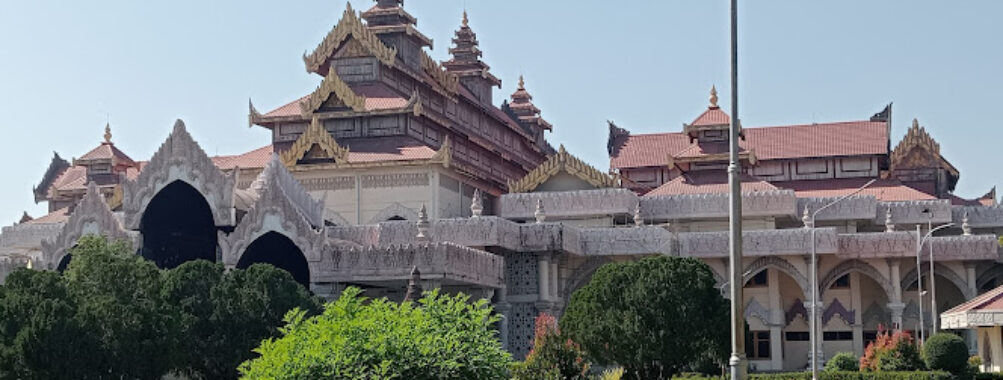
Bagan Archaeological Museum
Table of Contents
Description
The Bagan Archaeological Museum in Old Bagan is one of those places that quietly surprises travelers. At first glance, it looks like just another museum, but once inside, it feels like stepping into a time capsule of Myanmar’s golden Pagan dynasty. The collection is vast, showcasing stone Buddhas, terracotta plaques, tablets with inscriptions, and even scale models of the temples that dot the plains outside. Some visitors say it feels like a crash course in Bagan’s history before you head out to explore the temples themselves. Others linger here for hours, soaking up the details that often get missed when you’re rushing between pagodas in the heat.
What makes the museum stand out is its ability to connect the dots. You walk through galleries where mural fragments are preserved, and suddenly you understand how those faded temple walls once looked centuries ago. The stone inscriptions, though not always translated in English, give you a sense of the devotion and artistry of the people who built this empire. It’s not a flashy space, and it doesn’t try to be. Instead, it’s a thoughtful, almost meditative stop that balances the grandeur of Bagan’s temples with a more intimate look at its cultural roots.
Now, to be fair, not everyone falls in love with it. Some travelers find it a bit formal, and the lack of interactive displays can feel old-fashioned. But if you’re the kind of person who likes to pause, read, and imagine, this place rewards your patience. Personally, I found myself drawn to the quiet corridors where sunlight filtered through, casting shadows on centuries-old statues. It felt grounding, especially after being dazzled by the temple spires outside. The museum is also clean, well-maintained, and thankfully air-conditioned, which makes it a welcome break from Bagan’s relentless sun.
Key Features
- Extensive collection of Buddha images carved from stone, bronze, and wood
- Terracotta plaques and mural fragments that reveal temple art in its original form
- Stone inscriptions offering glimpses into the Pagan dynasty’s language and culture
- Scale models of Bagan’s temples and villages that help you visualize the ancient city
- Wheelchair accessible entrance and parking for inclusive access
- Restrooms available on-site, though no restaurant inside the museum
- Kid-friendly environment with exhibits that spark curiosity about history
Best Time to Visit
Timing matters in Bagan, and the same goes for the museum. The best time to visit is in the morning, ideally before noon, when the air is cooler and you’re still fresh. If you’re planning a full day of temple hopping, starting at the museum gives you context that makes the rest of your trip more meaningful. The museum is open year-round, but the dry season from November to February is the most comfortable time to be in Bagan overall. During these months, the weather is mild, the skies are clear, and you won’t be drenched in sweat five minutes after stepping outside. That said, if you come during the hotter months, the museum’s air-conditioning can feel like a lifesaver.
How to Get There
The museum sits right within the Bagan Archaeological Zone, so it’s easy to reach whether you’re staying in Old Bagan, New Bagan, or Nyaung U. Most travelers get around by e-bike, bicycle, or hiring a driver for the day. If you’re on an e-bike, it’s a straightforward ride, and the parking area is spacious enough to handle cars and bikes. From Nyaung U, it’s about a 15-20 minute drive depending on traffic. Honestly, half the fun is the journey itself—passing by fields dotted with temples, ox carts, and the occasional wandering goat. Just make sure your e-bike battery is charged; I once underestimated the distance and had to push mine for a good stretch in the heat. Not fun, but definitely memorable.
Tips for Visiting
Here are a few things to keep in mind to make your visit smoother and more enjoyable:
- Start early: Beat the crowds and the heat by arriving soon after opening hours.
- Bring water: There’s no café or restaurant inside, so carry a bottle with you.
- Take your time: Some exhibits don’t have detailed English labels, so slow down and observe. Sometimes the artistry speaks louder than words.
- Dress respectfully: It’s not a temple, but modest clothing is appreciated.
- Photography rules: Check signage before snapping photos—some sections may restrict it.
- Pair it with temple visits: Seeing the models and artifacts first makes exploring Ananda, Shwezigon, or Dhammayangyi temples more meaningful.
- Consider a guide: A local guide can bring the exhibits to life with stories that you won’t find on the plaques.
At the end of the day, the Bagan Archaeological Museum isn’t about dazzling you with spectacle—it’s about grounding you in the history of a civilization that shaped Myanmar’s identity. Some visitors breeze through in under an hour, while others linger for half a day. Personally, I think it’s worth slowing down here. Bagan’s temples are breathtaking, but without understanding the people who built them, you only get half the story. The museum fills in those gaps, and that, in my opinion, makes it one of the most underrated stops in Bagan.
Location
Places to Stay Near Bagan Archaeological Museum
Find and Book a Tour
Explore More Travel Guides
No reviews found! Be the first to review!